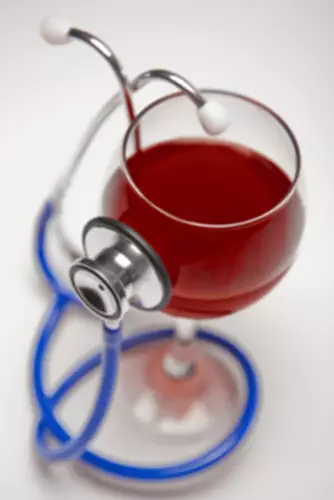10 3: Elimination Reactions of Alcohols: Dehydration Chemistry LibreTexts
Content
- Does Hydration Status Influence Executive Function? A Systematic Review
- Prevalence of dehydration and fluid intake practices in elite rally Dakar drivers
- Menthol Mouth Rinsing and Performance in Elite Football Referees in the Heat: A Study Protocol for a Randomized Crossover Trial
- Critical Signs and Symptoms of an Alcohol Overdose
- Participants
- METABOLIC EFFECTS OF ALCOHOL ON THE LIVER.
The results of the present study suggest that hypohydration appears to blunt the diuretic action of a small dose of alcohol. Total urine production over the four hours after drink consumption was greater (on average by 158 ml; 10 of the 12 participants produced more urine) on the euhydrated trial with alcohol than without, in line with previous research. The urine volume produced on the hypohydrated trials was, not unexpectedly, less than on the euhydrated trials, but there was no difference in the total volume of urine produced with (261 ± 138 ml) or without (174 ± 61 ml) alcohol in the beer ingested. It took 4 h after drink consumption for the difference in urine production between EA and ENA trials to reach statistical significance. Serum osmolality was significantly greater in EA compared with ENA for 3 h after drinking but by the end of the 4-h monitoring period, serum osmolality was not different between treatments. Blood alcohol concentration peaked at 1 h after ingestion and remained significantly elevated in EA compared with ENA for 3 h after drinking.
Suggested mechanisms for this metabolic tolerance are shown in LIST 5 (55,61–63). A number of the central nervous system effects of ethanol are mediated by acetaldehyde. Because circulating acetaldehyde levels are very low, the metabolism of alcohol to acetaldehyde by the brain has been a major research area in alcohol research. Inhibitors of catalase were reported to depress oxidation of alcohol to acetaldehyde by the brain. Alcohol elimination is reported to be somewhat higher in subjects expressing the beta3 class I ADH isoforms compared with individuals who only express the beta 1 isoform (see ADH alleles discussed below).
Does Hydration Status Influence Executive Function? A Systematic Review
Two groups or two atoms on neighbouring carbon atoms are eliminated or removed from the molecule in an elimination process, leaving numerous bonds between the carbon atoms.
Cumulative urine output in mL per beverage (AB, NAB, AW, NAW, S, and W; mean ± standard deviation (SD)) and the difference (∆) in cumulative urine output in mL among the different types of alcoholic beverages (∆BEER, ∆WINE, ∆SPIRITS; mean ± SD) over time. Substantial evidence exists to support the concept that kidney failure in hepatorenal syndrome is not related to structural damage and is instead functional in nature. For example, almost 30 years ago, https://ecosoberhouse.com/article/does-alcohol-dehydrate-you/ Koppel and colleagues (1969) demonstrated that kidneys transplanted from patients with hepatorenal syndrome are capable of resuming normal function in recipients without liver disease. In addition, Iwatsuki and colleagues (1973) and Gonwa and Wilkinson (1996) documented the return of normal kidney function in hepatorenal syndrome patients who receive liver transplants. Teenagers and young adults who drink may be at particular risk for alcohol overdose.
Prevalence of dehydration and fluid intake practices in elite rally Dakar drivers
Other drugs often used to manage symptoms include neuroleptics, anticonvulsants like carbamazepine, and valproic acid. The hallmark of management for severe symptoms is the administration of long-acting benzodiazepines. The most commonly used benzodiazepines are intravenous diazepam or intravenous lorazepam for management. Patients with severe withdrawal symptoms may require escalating doses and intensive care level monitoring. Early consultation with a toxicologist is recommended to assist with aggressive management as these patients may require benzodiazepine doses at a level higher than the practitioner is comfortable with to manage their symptoms.
The first uses the single step POCl3 method, which works well in this case because SN2 substitution is impeded by steric hindrance. The second method is another example in which an intermediate sulfonate ester confers halogen-like reactivity on an alcohol. Cytochrome P450s are https://ecosoberhouse.com/ a family of heme enzymes which are involved in the oxidation of steroids, fatty acids, and numerous xenobiotics ingested from the environment. Highest levels of cytochrome P450 are in the liver, where they are present mainly in the endoplasmic reticulum (microsomal fraction).
Menthol Mouth Rinsing and Performance in Elite Football Referees in the Heat: A Study Protocol for a Randomized Crossover Trial
In the condition referred to as a hangover, in which individuals experience nausea, vomiting and dizziness, as well as thirst, the former symptoms are thought to be elicited by acetaldehyde, which comprises a metabolite of EtOH and a toxic substance [18]. Acetaldehyde is also considered to have an important key role in alcohol addiction [19]. Recently, it has been reported that acetaldehyde elicits the intake of water and salt without diuresis [16]. Moreover, a study has demonstrated that acetaldehyde has no effect on AVP release from the posterior pituitary [20].

The findings of the present study indicate that mild to moderate dehydration causes greater deterioration of some cognitive functions in individuals that have consumed alcohol compared to conditions where fluid deficit is corrected. It is also clear that there is a greater individual variation in the urine volumes produced on both of the alcohol trials than on their equivalent hydration status non-alcohol trial. We have investigated this pattern further to determine if this is an indication of individual sensitivity to the action of alcohol. It has been suggested that habitual intake may affect the diuretic response to ingested alcohol, in much the same way as regular consumers can become habituated to the psychological effects of alcohol (Stookey, 1999). On the subsequent morning after heavy-alcohol drinking, many individuals experience thirst sensation and oral dryness as well as other unpleasant feelings [18], [26]. It is widely believed that the thirst sensation induced by alcohol drinking causes alcohol-induced diuresis [12].
Thirst sensation and oral dryness following alcohol intake
As the plasma filtrate passes along this channel, the substances the body needs to conserve are reabsorbed into an extensive network of capillaries that wrap the nephron tubule. Small amounts of unwanted substances also are secreted directly into the nephron tubules. Together, the filtered and secreted substances form urine (see figure) and eventually trickle into a series of progressively larger collecting ducts.

These effects vary depending on factors such as the amount and duration of drinking, the presence of other diseases, and the drinker’s nutritional status (see table, p. 90). The effects of alcohol have also been measured directly using the CANTAB instrument. Weissenborn and Duka (2003) used a CANTAB test of executive function (Tower of London Task/Stockings of Cambridge) to examine spatial planning and motor control. A number of studies have also demonstrated that measures of inhibitory control are reliably impaired by moderate (∼0.06%) doses of alcohol (Fillmore, 2007; Marczinski et al., 2005; de Wit et al., 2000). Using a Stop Signal Task (SST) similar to that provided in the CANTAB, de Wit et al. (2000) found that moderate doses of alcohol (∼0.06%) impaired inhibition with significantly slowed stop-signal reaction times (SSRT) observed. Murray (1932) suggested that alcohol may exert its diuretic action by a direct inhibitory effect of ethanol on vasopressin release from the posterior pituitary gland.
Animals with small body weight metabolize alcohol at faster rates than larger animals e.g. the rate of alcohol elimination in mice is 5 times greater than the rate in humans. These rates of alcohol metabolism correlate with the basal metabolic rate for that species, indicating that the capacity to oxidize ethanol parallels the capacity to oxidize the typical nutrients. However, it is important to note that alcohol-derived calories are produced at the expense of the metabolism of normal nutrients since alcohol will be oxidized preferentially over other nutrients (19–23). Some of the alcohol which is ingested orally does not enter the systemic circulation but may be oxidized in the stomach by ADH isoforms such as σADH and class I and class III ADH.
Therefore, the more highly-substituted double bond isomer is favored among the products. The balance between the various ADH and ALDH isoforms regulates the concentration of acetaldehyde, which is important as a key risk factor for the development of alcoholism (70–74). Most of the acetaldehyde produced from the oxidation of alcohol is further oxidized in the liver by a family of ALDH isoforms. Major ALDH isoforms exist in the mitochondrial, microsomal, and cytosolic compartments.
Participants
Like alcohol, these drugs suppress areas in the brain that control vital functions such as breathing. Ingesting alcohol and other drugs together intensifies their individual effects and could produce an overdose with even moderate amounts of alcohol. What tips the balance from drinking that produces impairment to drinking that puts one’s life in jeopardy varies among individuals. Age, sensitivity to alcohol (tolerance), gender, speed of drinking, medications you are taking, and amount of food eaten can all be factors. Drinking too much and too quickly can lead to significant impairments in motor coordination, decision-making, impulse control, and other functions, increasing the risk of harm.
- An aliquot (5 mL) from each time-point was stored at −20 °C until further analysis.
- However, if urine samples were incomplete, we expect this to have happened randomly, without influencing the outcome of the study.
- GABA has particular binding sites available for ethanol, thus increasing the inhibition of the central nervous system when present.
- In addition, it is important to note that the beverages were not consumed in the fasting state, but together with a meal.
After you take a drink, both the liquid and alcohol contents of the beverage pass through your stomach lining and small intestine into the bloodstream. Similarly, when there is no hydride available for hydride shifting, an alkyl group can take its bonding electrons and swap place with an adjacent cation, a process known as alkyl shift. When more than one alkene product are possible, the favored product is usually the thermodynamically most stable alkene. More-substituted alkenes are favored over less-substituted ones; and trans-substituted alkenes are preferred compared to cis-substituted ones.


